While the NPP has sufficient rolling stock for operations, agents are clamoring for home road boxcars. With the Summer construction season, the mills are running full tilt and shippers need to move product. The situation has gotten to the point where foreign cars have been “borrowed” and hoping the owning road doesn’t notice too soon.
On the RIP track (workbench) were five NP boxcars that were shelved for duplicate numbers. I’d acquired a sheet of Micros Scale NP N-scale decals for boxcars of the period, and while N-scale decal numbering ranks even below wiring for me, the layout needs Northern Pacific boxcars.
The first order of business was to verify that the Micro Trains (MT) models carried prototype numbers. The Northern Pacific Railroad Historical Association site has drawings of the various NP boxcars, and it was edifying.
Micro Trains 039 00 030
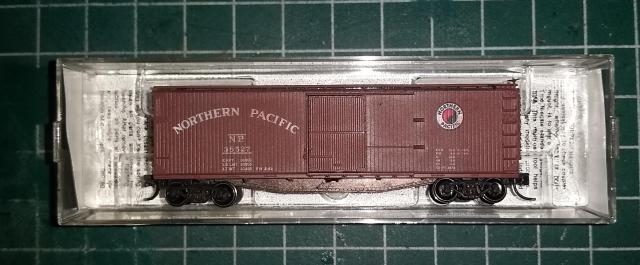
40′ double-sheathed vertical brake wheel with a nominal 1942 build date. The NPHRA archives show that the only NP boxcars in this road number series were 36′ cars, and there were no NP boxcars in the series as of the October 1948 ORER. The fish-belly frame is correct, but all NP double-sheathed boxcars had horizontal brake wheels. But I have four of these models, and even cars of dubious accuracy can handle traffic. I wasn’t going to spend effort on renumbering these cars, and am going to handle the duplicate numbering by not having more than the two distinct numbers on the layout at a time.
Micro Trains 29030
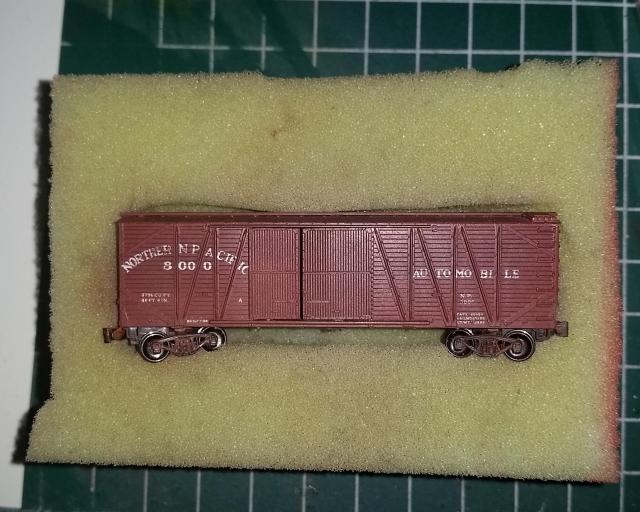
40′ single-sheathed horizontal brake wheel auto car with a 1929 build date. The model appears to be based on the Pacific Car & Foundry supplied boxcars built in 1929 and numbered 8000 – 8099, and 98 were in service in 1948. The major departure from prototype is the lack of a fish-belly center sill. And the prototype appears to have had two doors of equal size, rather than a door-and-a-half. I haven’t seen a photo, so can’t say for sure. I have read in the prototype literature that auto boxcars were preferred for lumber service as they were easier to load. Based on the examples to hand, these cars came from the factory with at least three road numbers: 8000, 8006, and 8008. I changed one of the duplicate ‘8000’ cars to 8001.
The numbers are printed, and alcohol was ineffective. A little gentle scraping with a hobby knife removed the number, but left a light patch. A little envious of hobbyists with a modern focus here, as ‘patchouts’ are common these days, but in my era railroads spent more on paint.
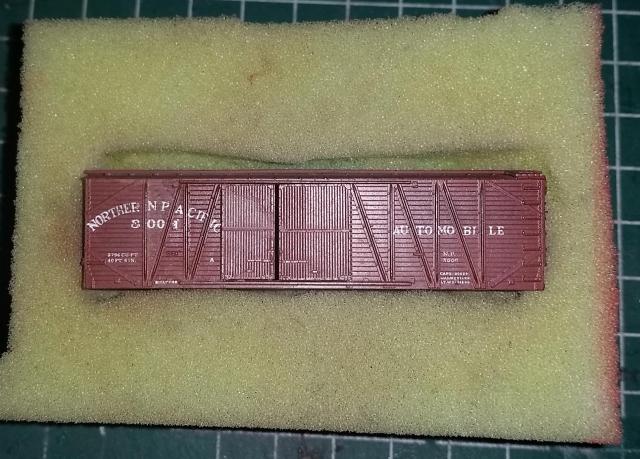
The cars were checked, weighted, and painted wheels were installed. A little weathering, and the home road boxcar fleet increased by 40%.

And as soon as the RIP track was cleared, the Ten-Wheeler threw its traction tires, making it ineffective for service. As soon as a 2 mm nut driver can be delivered, I’ll take care of it, but in the meantime, Tacoma is a one (iron)horse town.
Let’s Run Some Trains!

The Ten-Wheeler broke and had to limp back to the Tacoma shops, abandoning it’s train of timber flats. Those cars need to be spotted, and the mty pulled from Wheeler – Osgood. The cars in the interchange will be handled later.
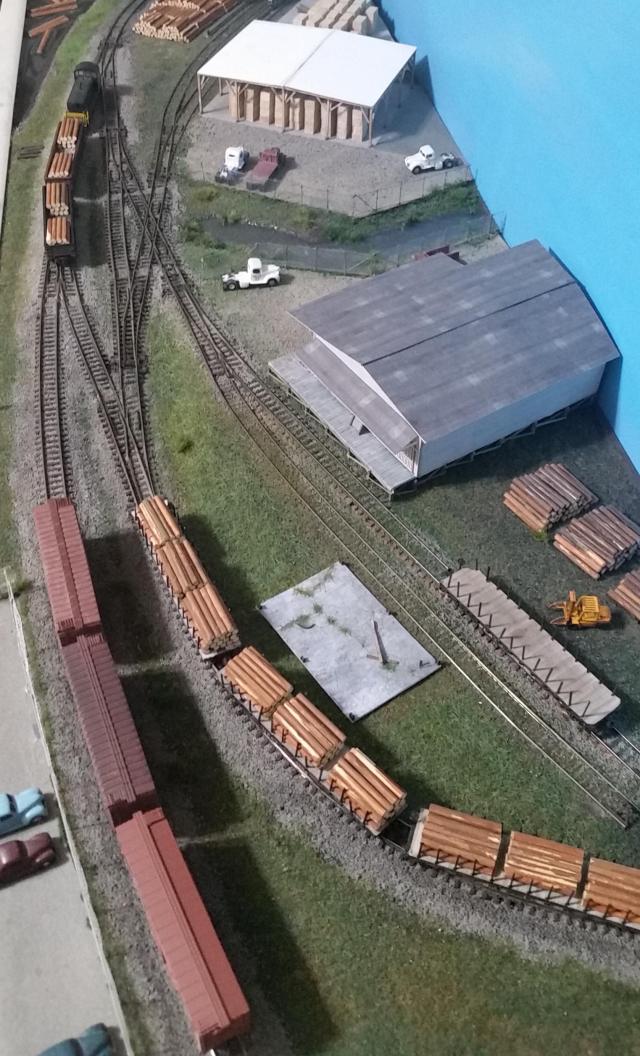
After finishing it’s work in the warehouse district, the 106 starts switching the train. The first three cars go to Cheney Lumber, and gondolas can only be unloaded by the crane at that mill. The gons are stashed on the interchange track.

Then the mty is pulled.
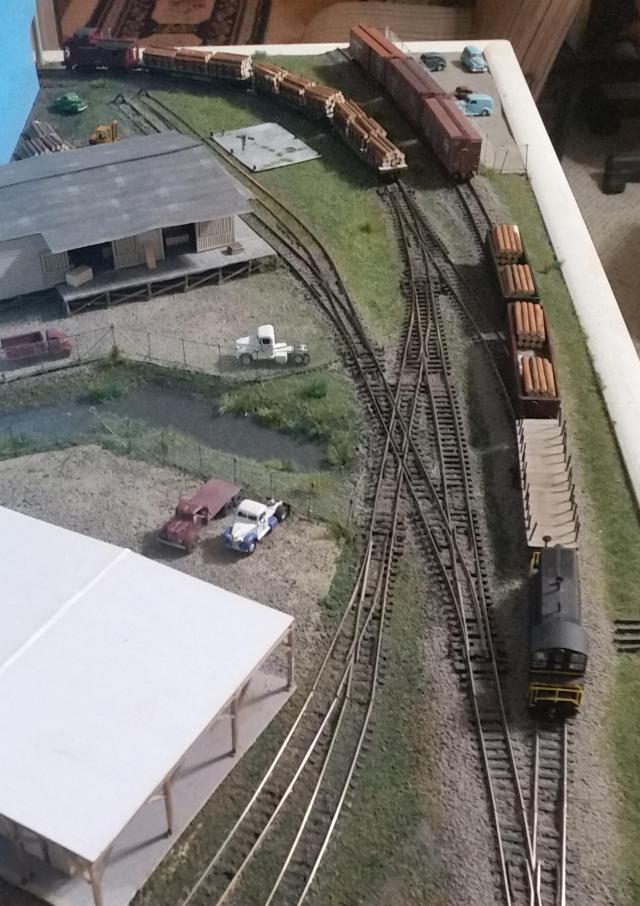
The flatcar is put on the interchange, and the remaining three flats are pulled, with the last two spotted at W – O. There is only one unloading spot, so the other car will be off-spotted on the adjacent spur. The mty will be spotted in front for later retrieval. Spotting the mty first would save a few moves, but if the flat at the unload isn’t ready, the next crew will have to dig the mty out and re-spot the off-spot car. I suspect in real life if this job was additional work for the crew, they’d just put the mty wherever was convenient at the moment.
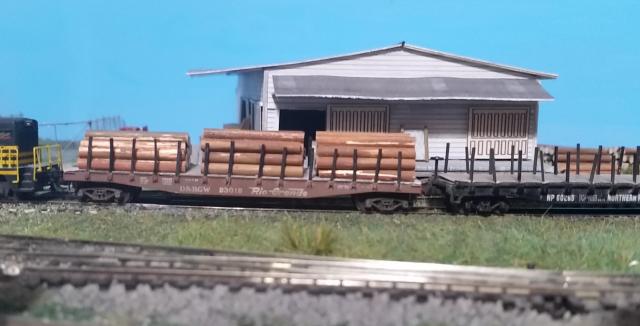
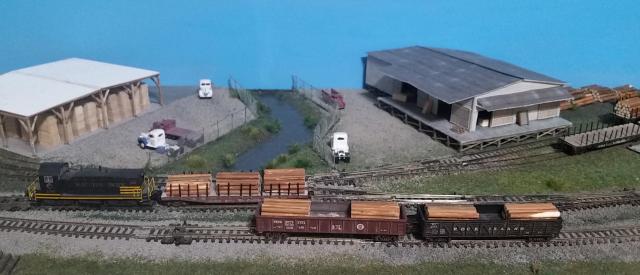
With Wheeler – Osgood switched, the remaining flat is spotted where the engine can run around and shove it into Cheney Lumber. The gondolas barely fit into the interchange track with the boxcars, but in keeping with the Inglenook design, it is a five-car siding. But that’s five 40-footers, and barely a scale foot more.
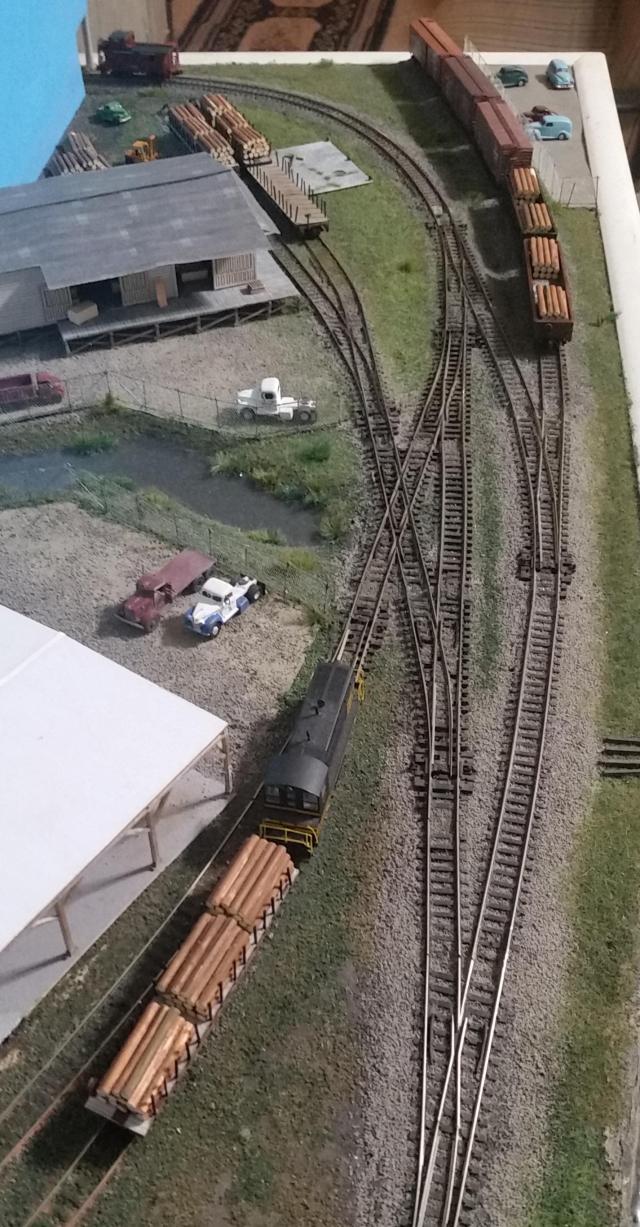
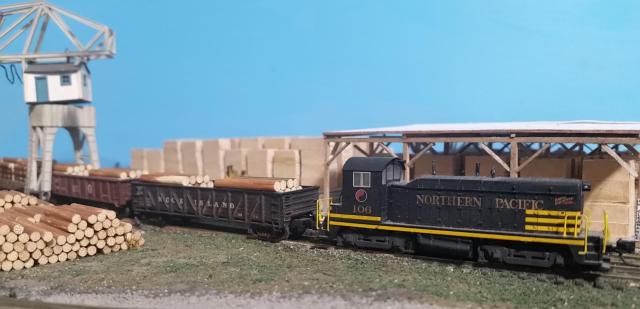
The locomotive performs a similar move with the gons to complete the work.

You must be logged in to post a comment.